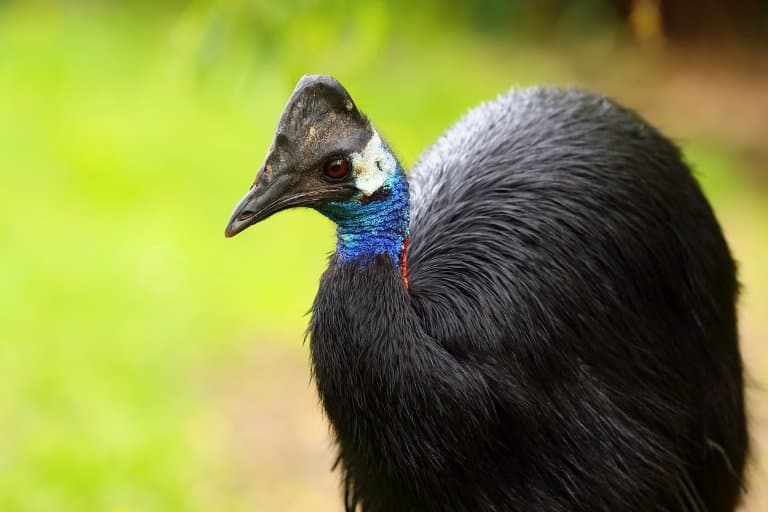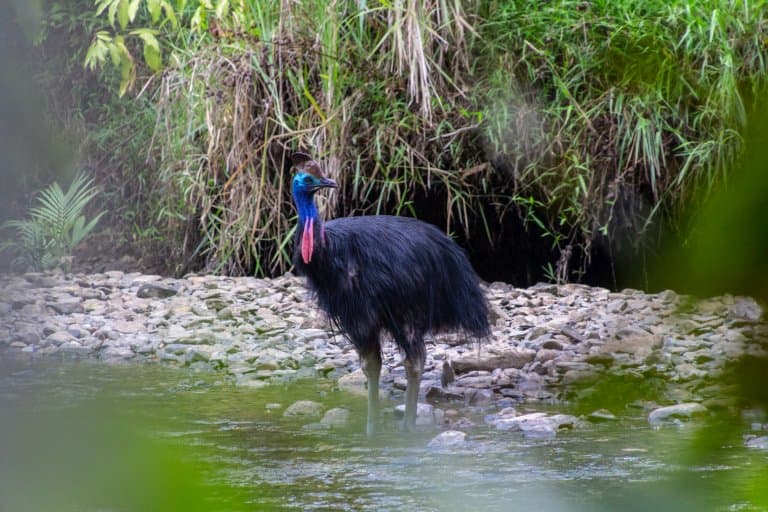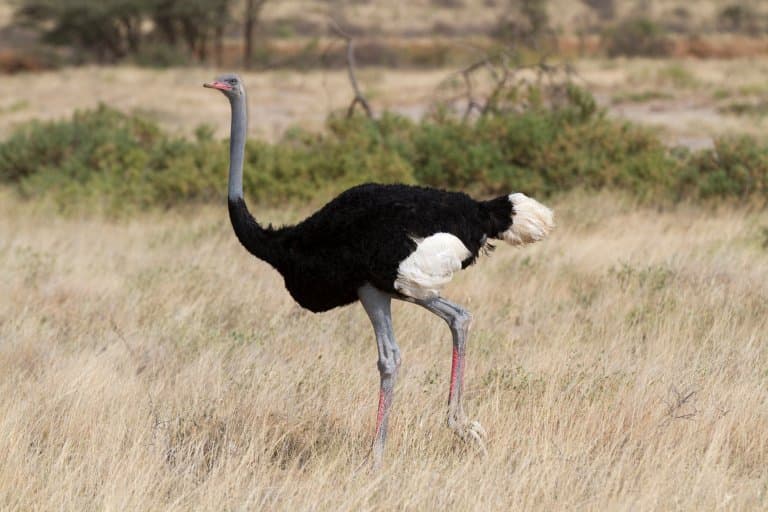Birds, with their diverse forms and remarkable adaptations, have captivated human fascination for centuries. Among them, some stand out for their sheer size, commanding attention and awe.
In this article, we will explore the top 10 biggest birds in the world. 1
There are nearly 10,000 different species of bird, but which are the biggest? We’ve talked about the ambiguity of size before: do we go by length, weight, or how much bathwater they displace?
We’ve covered the 10 Largest Flying Birds in The World which considered wingspan, so for this piece it makes sense to consider the biggest birds by their reliable mass, and weight.
The heaviest birds are almost all flightless, with much denser bones and bodies.
While flightless birds comprise of less than 1% of all species, these mighty giants remind us of the incredible diversity and grandeur of the avian world.

Here’s our top ten list of the biggest birds in the world considering their recorded maximum weight.
10. King Penguin (Weight: 20 kg / 44 lb)
The first in our list of the largest birds in the world is the King Penguin. This is the second-largest species of penguin, to one other species also found on this list.

Found in the subantarctic regions, these aquatic birds reach heights of around 3.1 feet (0.95 meters) and weigh up to 44 pounds (20 kilograms).
King penguins display a distinctive black and white plumage. They have bright orange patches on their necks, beaks, and cheeks.
Incredibly, they can dive to depths of 300m (1,000 ft) in search of fish, squid and krill.
9. Lesser Rhea (Weight: 29 kg / 64 lb)
The lesser rhea is a large, flightless bird that lives in the open scrub and grasslands in Altiplano, and Patagonia, in South America.

They are the smaller of the two species of rheas, but can stand up to 100cm (1 meter) in height and weigh between 15 to 29 kg (33–64 lb).
The lesser rhea has incredibly sharp claws on its toes, and can reach lightening running speeds of 60 km/h (37 mph) to escape predators.
8. Dwarf Cassowary (Weight: 34 kg / 75 lb)
The dwarf cassowary lives in mountain forests of New Guinea, New Britain, and Yapen Island.

They are amusingly named ‘dwarf’ as they are the smallest species of cassowary, and yet – they still make the top 10 list of largest birds in the world.
They measure between 3ft 3 – 4ft 11 in length, and can weigh between 7.6 and 34 kg (39 and 75 lb). The dwarf cassowary mainly feeds on fallen fruit, but will also eat small vertebrates, insects and fungi.
7. Greater Rhea (Weight: 40 kg / 88 lb)
Moving on, we meet the Greater Rhea, which is the largest bird native to South America. These graceful giants can stand up to 5.9 feet (1.8 meters) tall and weigh up to 88 pounds (40 kilograms).

With their long legs and strong bodies, rheas can reach impressive speeds of up to 37 miles per hour (60 kilometers per hour) when running.
For reference, Usain Bolt only reaches speeds up to 43.99 kilometers per hour!
6. Emperor Penguin (Weight: 46 kg / 101 lb)
The king penguin isn’t the only penguin on this list. Coming in at number six is the emperor penguin!

These beautiful birds can reach heights of up to 4 feet (1.2 meters) and weigh around 88 pounds (40 kilograms), but can grow larger.
They are well adapted to survive the extreme cold, forming huddles to withstand the freezing temperatures that can plummet as low as -40 degrees Celsius.
They can also hold their breath for up to 22 minutes!
5. Emu (Weight: 70 kg / 150 lb)
Emus are tall birds with long necks and legs endemic to Australia. They are the second-tallest living bird that can reach up to 1.9 metres (6 ft 3 in) in height.

Adult emus weigh between 18 and 70 kg (40 and 150 lb) and can run at high speeds of up to 48 km/h (30 mph), due to their highly specialised pelvic limb musculature.
When running at full-speed they can take long strides of up to 9-feet at a time!
4. Northern Cassowary (Weight: 75 kg / 167 lb)
The northern cassowary is a stocky bird of northern New Guinea, and the middle-sized species of three cassowaries on this list of largest birds.

These birds are 149 cm (4 ft 10) long and 1.5-1.8 m (4 ft 11 in – 5 ft 11 in) tall.
The northern cassowary has a shorter bill than the southern cassowary, measuring 12 to 13.7 cm (4.7 to 5.4 in), but a slightly larger tarsal length, measuring 28 to 33.2 cm (11.0 to 13.1 in).
These birds are typically shy and solitary, and will diet on berries, fruit, small animals and insects.
3. Southern Cassowary (Weight: 85 kg / 187 lb)
The largest species of cassowary and the third on our list is the southern cassowary, hailing from the lush landscapes of New Guinea, Indonesia, and northeastern Australia.

Standing tall at an impressive 5.8 feet (1.8 meters) and weighing up to 187 pounds (85 kilograms), these magnificent creatures command attention and awe.
They have a horn-like brown casque on the top of their head and leathal dagger-like claws on their toes. They have a reputation for being aggressive, and can jump and kick with force!
2. Somali Ostrich (Weight: 130 kg / 290 lb)
Securing the second spot is the Somali ostrich. Once considered a subspecies, the Somali ostrich is now recognized as a distinct species, found in the Horn of Africa.

With a height of up to 9.8 feet (3 meters) and a weight of around 290 pounds (130 kilograms), these ostriches are huge. Their powerful legs allow them to cover great distances with remarkable speed.
Though otherwise identical to other ostriches, the skin of the Somali ostrich’s neck and thighs is blue (rather than pinkish), becoming vivid blue on the male during mating season.
1. Common Ostrich (Weight: 157 kg / 346 lb)
We reach the pinnacle of our list with the Common Ostrich, the largest living bird on the planet.

These magnificent creatures can tower up to 9.8 feet (3 meters) tall and weigh up to an astonishing 346 pounds (157 kilograms).
Ostrich possess long, powerful legs that enable them to sprint at incredible speeds, reaching up to 43 miles per hour (70 kilometers per hour).
Final Thoughts
This concludes our research on the biggest birds in the world, that are living today. But, does size matter?
For many, the size of a bird is about bragging rights, but for researchers, it’s an important trackable metric that has implications for the protection of the species and the environment in which it lives.
From size measurements, it’s possible to infer the physical, physiological and ecological properties of the animal, including gender, how much it eats, how much energy it needs, and how much it recycles nutrients into the ecosystem.
Every bird in the top 10 is flightless, which isn’t by coincidence. It’s thought that these birds lost their ability to fly gradually through evolution.
Birds that live on islands with no obvious land predators would spend less energy flying, which would mean smaller and weaker wings, which were passed onto offspring. 2
As body weight is no longer a constraint, flightless birds then often grow larger. 3
Fact Sources & References
- Tim M. Blackburn and Kevin J. Gaston (1994), “The Distribution of Body Sizes of the World’s Bird Species“, JSTOR.
- BBC Wildlife Magazine (2023), “Flightless birds: how did some birds lose their ability to fly?“, Discover Wildlife.
- Paul R. Ehrlich, David S. Dobkin, and Darryl Wheye (1998), “Size and Sex in Raptors“, Stanford.
